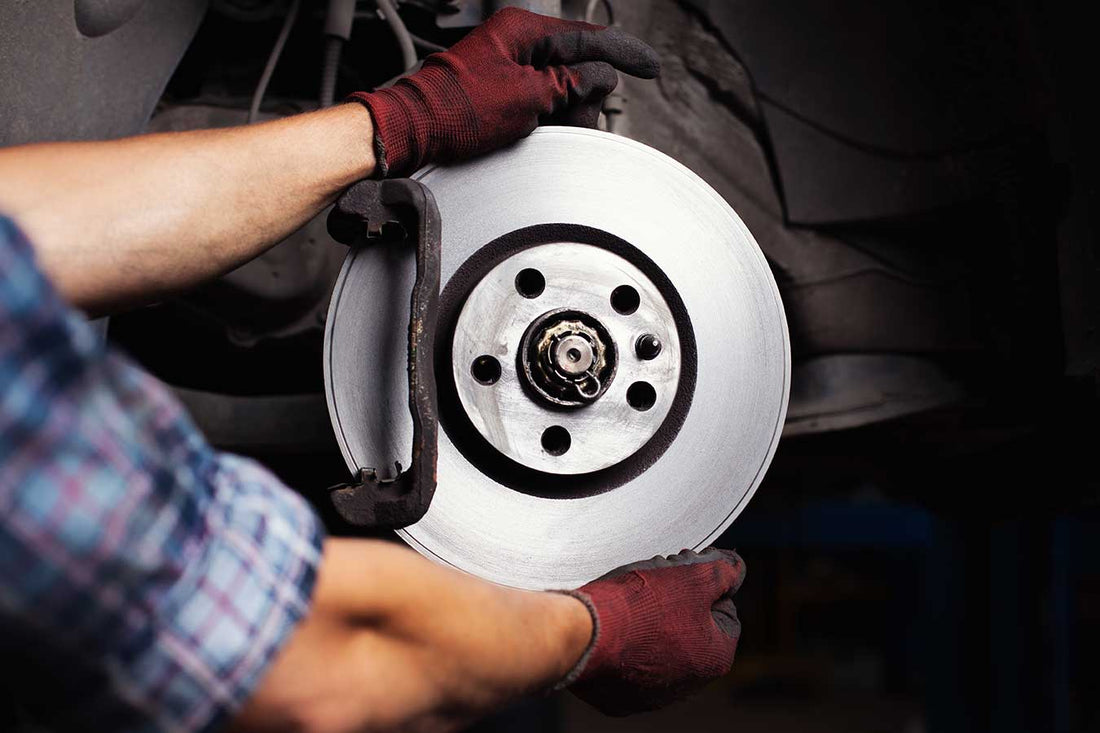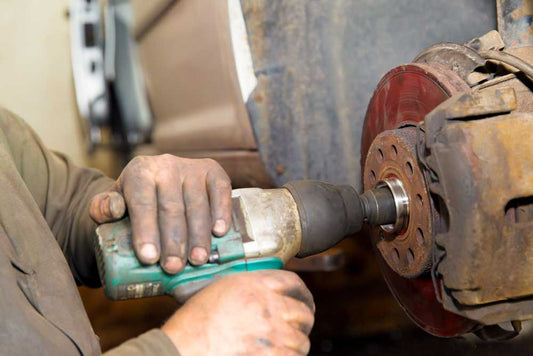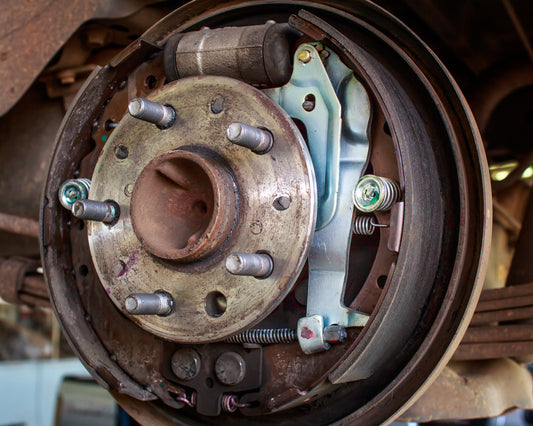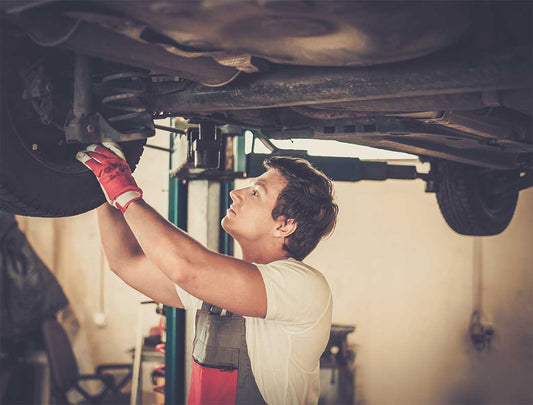Problem
Both front wheels are experiencing wheel drag.
Cause of Two Wheel Drag
Residual pressure causing brakes to apply after brakes reach operating temperature. As a result, the most common cause for this condition comes from plugged or covered vent ports in the master cylinder.
Two Wheel Drag Solution
The first step to fixing two-wheel drag is to identify the cause of the residual pressure. As you'll see, when presented with a two-wheel drag complaint, the diagnostic process starts under the hood, not at the wheel. Similarly, both wheels having the same symptom rules out the calipers and brake hoses as likely causes. The cause will almost always be something similar to both wheels (See Figure 55.1).
NOTE: Before proceeding with diagnosis check the system for contamination.You will need to duplicate the system before the diagnosis can continue. To begin, take the vehicle for a test drive to bring the brakes up to operating temperature. When performing this step, it is best to follow the advice below:
- First, be sure to stay close to the shop.
- Next, take a line wrench (If the drag increases to a non-drivable point, you'll be glad you have it.)
- Finally, do not “hammer” the brakes during the test drive. Make numerous stops in city driving until you either feel the drag or know the brakes are at operating temperature.
Diagnosing Two Wheel Drag
1. Once the brakes are at operating temperature or the drag has been duplicated, rack the vehicle and leave it neutral. 2. Check all four wheels for drag. If necessary, measure drag. 3. Drag on front brakes (or front and rear on four-wheel disc brake-equipped vehicles) – first, start by loosening the master cylinder away from the vacuum booster by ¼” . Check effect on drag condition. If drag is still present, go to the next step. If drag is released, go to step eight. 4. Drag still present with master away from booster – Loosen the brake line(s) supplying the dragging brakes. Check effect on drag. If drag is released, there is an internal problem in the master cylinder. You'll either have plugged vent port(s) or a binding piston(s) in the bore. Master cylinder replacement is required. If drag is not released, go to the next step. 5. Drag is not released after brake lines at master cylinder are loosened. First, locate the next component downstream from the master cylinder. Likewise, trace the brake lines from the front wheels to that component. Next, loosen outlet lines of components that supply the dragging brakes. If drag is released component is the source of restriction and requires replacement. If drag is not released, go to the next step.
Drag Not Releasing
6. Drag is not released after loosening brake lines at the outlet of the component between the master cylinder and dragging brakes. Trace lines to dragging brakes. For instance, is there another component between the component tested in step 5 and dragging brakes? If yes, repeat step 5 on that component. If no, go to the next step.7. Wheel drag still present on both wheels after performing steps 3 through 6. Open bleeder screws on both front calipers and check the effect on drag condition. If either wheel frees up, the brake hose on that wheel acts as a one-way check valve. If either or both wheels fail to release, the problem is a mechanical problem with both front calipers. Inspect and service as required.8. Wheels released after the master cylinder was moved away from the vacuum booster. The problem is in front of the master cylinder. Something is not allowing pistons in the master cylinder to return to a fully released position resulting in the cup seals covering the vent ports. The list of possible causes varies from vehicle to vehicle-based on system configuration. Here is a list of possible causes (see Figure 55.2):

Possible Causes of Two Wheel Drag
- Stoplight switch adjustment.
- Binding pedal linkage – check for unrestricted movement. If necessary, disconnect the booster pushrod.
- Pedal height adjustment – some import vehicles have an adjustable link between the brake pedal and booster.
- Vacuum booster applying partial assist – air and vacuum valves inside booster may not be returning to their proper position when the brake pedal is released. Likewise, pull the one-way check valve out of booster with drag present to check for this condition.
- The adjustable pushrod on the booster is too long.
More Tips and Tricks
Are you looking for more tips and tricks? Please consider joining our Facebook group "Mechanic Mafia." The group is a place for mechanics of all skill levels to learn, rant, and more. Otherwise, feel free to check out some of our other articles by clicking the button below.
Facebook Group
More Articles





